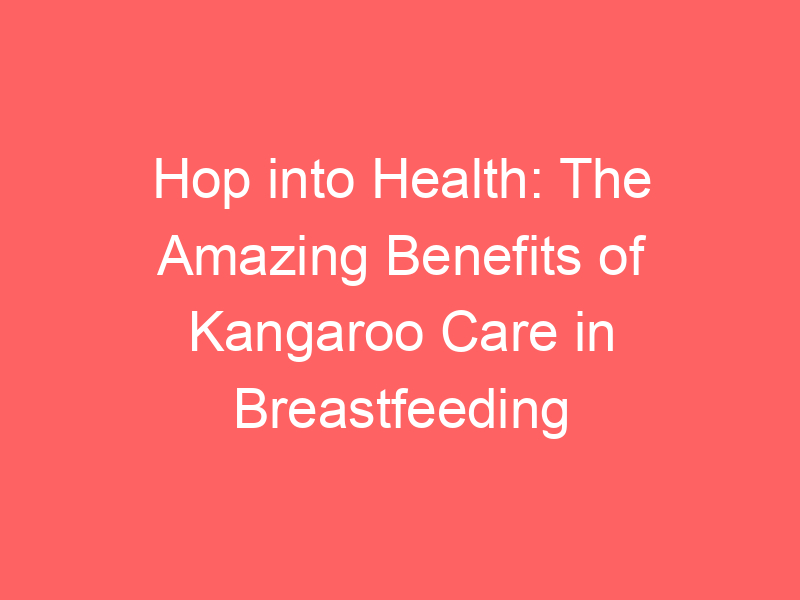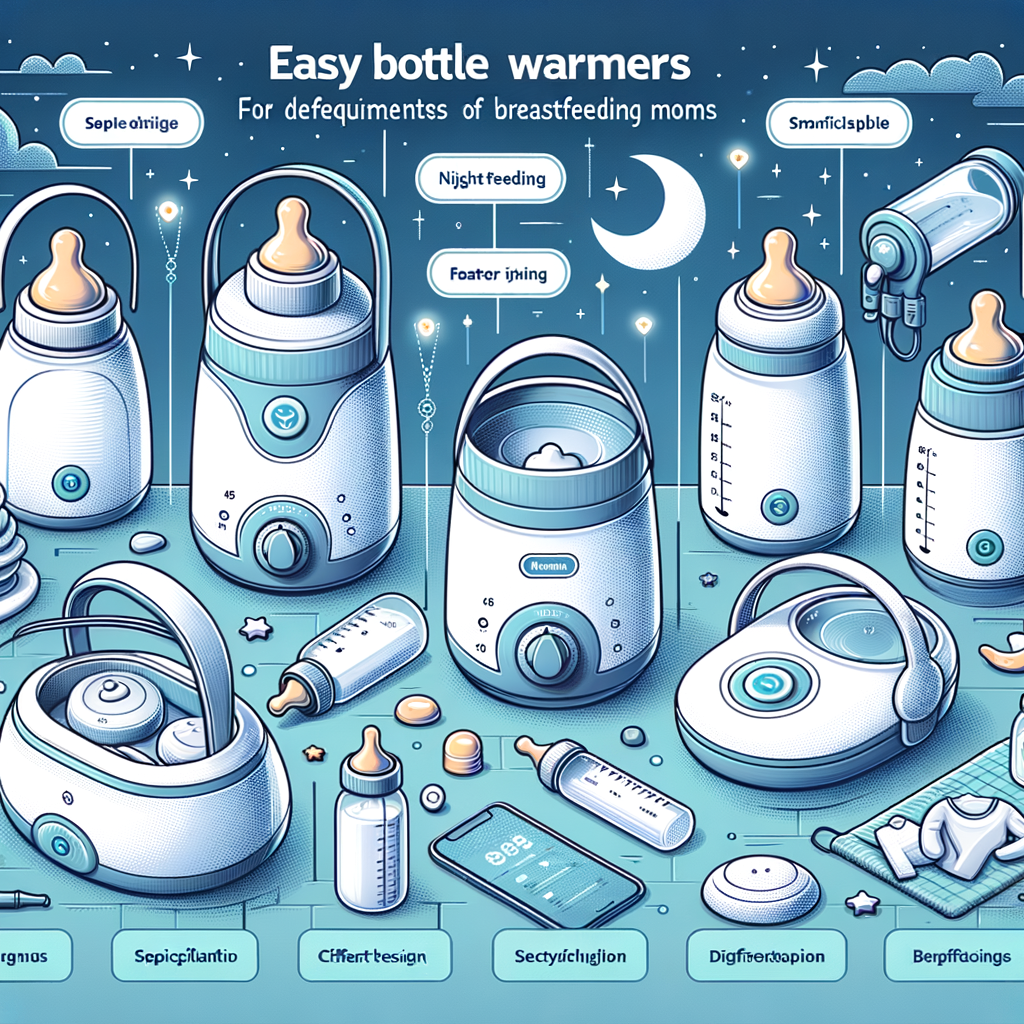Introduction to Kangaroo Care
When it comes to the care and nurturing of newborns, especially premature babies, one method has proven to be incredibly beneficial. This method, known as Kangaroo Care, has been embraced by healthcare professionals and parents around the world. In this section, we will explore what Kangaroo Care is and delve into its origins and history.
-
- Definition of Kangaroo Care
Kangaroo Care, also known as skin-to-skin care, is a method of caring for newborns that involves direct contact between the baby and the parent’s skin. The baby, wearing only a diaper, is held upright against the parent’s bare chest, mimicking the pouch of a kangaroo. This method promotes bonding, warmth, and has been shown to have numerous health benefits for both the baby and the parent.
-
- Origins and History of Kangaroo Care Method
The Kangaroo Care method originated in Bogotá, Colombia, in the late 1970s. Faced with a lack of incubators and a high rate of infant mortality, doctors Edgar Rey and Hector Martinez developed this method as a way to keep premature babies warm and allow them to continue developing outside of the womb. The method was named ‘Kangaroo Care’ because of the similarity to how kangaroo mothers carry their babies in their pouches. Over the years, research has shown that Kangaroo Care has many benefits, leading to its adoption in hospitals and homes around the world.
Kangaroo Care Benefits
When it comes to newborn care, Kangaroo Care offers a multitude of benefits. This method, which involves skin-to-skin contact between the mother and baby, has been shown to have significant physical and emotional benefits.
Benefits of Skin-to-Skin Contact
Let’s delve into the specific benefits of skin-to-skin contact, which is the cornerstone of Kangaroo Care.
-
- Physical Benefits for the Baby
Research has shown that skin-to-skin contact can help regulate the baby’s heart rate, breathing, and temperature. It also promotes better sleep, weight gain, and brain development. According to a Wikipedia article on Kangaroo Care, premature babies who experienced skin-to-skin contact had a 36% lower mortality rate than those who did not.
-
- Emotional Benefits for the Mother
For mothers, Kangaroo Care can reduce stress and anxiety, increase milk production, and enhance maternal attachment. A study found that mothers who practiced Kangaroo Care reported lower levels of depression and higher levels of satisfaction with their parenting skills.
-
- Strengthening the Mother-Baby Bond
Perhaps one of the most profound benefits of Kangaroo Care is the strengthening of the bond between mother and baby. This skin-to-skin contact facilitates a deep emotional connection that can have lasting benefits for both mother and child.
In conclusion, Kangaroo Care, with its emphasis on skin-to-skin contact, offers a host of benefits for both mother and baby. It’s a simple, yet powerful way to promote the health and well-being of your newborn.
Kangaroo Care for Newborns
When it comes to newborn care, one method has been gaining recognition for its numerous benefits – Kangaroo Care. This method, which involves skin-to-skin contact between the newborn and the parent, is not just comforting, but also crucial for the baby’s development.
Importance of Kangaroo Care in the First Hours After Birth
The first few hours after birth are critical for both the mother and the newborn. This is when Kangaroo Care can make a significant difference. Immediately after birth, the newborn is placed on the mother’s bare chest, promoting skin-to-skin contact. This simple act has profound effects.
According to a study published in the Journal of Perinatology, Kangaroo Care in the first hours after birth can help regulate the newborn’s body temperature, heart rate, and breathing. It also encourages the initiation of breastfeeding, which is vital for the baby’s health and development.
How Kangaroo Care Supports Newborns’ Development
But the benefits of Kangaroo Care extend beyond the first few hours. Regular skin-to-skin contact can support the newborn’s overall development. It has been linked to improved weight gain, better brain development, and a stronger immune system.
One study found that preterm infants who received Kangaroo Care showed better cognitive and motor development at six months compared to those who did not. This shows how Kangaroo Care can support the development of even the most vulnerable newborns.
In conclusion, Kangaroo Care is not just a comforting practice, but a powerful tool that can support the newborn’s health and development. Whether in the first few hours after birth or in the months that follow, this simple act can make a big difference.
Kangaroo Care and Breastfeeding
One of the key aspects of Kangaroo Care is the promotion of breastfeeding. Let’s delve into the advantages of breastfeeding and how it contributes to the overall health and development of the baby.
Breastfeeding Advantages
Breastfeeding is a natural and beneficial way of feeding your baby. It offers numerous advantages not only for the baby but also for the mother. Here, we will discuss two main benefits of breastfeeding: its nutritional value and its role in immune system development.
-
- Nutritional Benefits of Breastfeeding
Breast milk is often referred to as the “perfect food” for a baby’s digestive system. It contains the vitamins and nutrients that a newborn needs, and all its components – lactose, protein (whey and casein), and fat – are easily digested by a newborn’s immature system. Moreover, breast milk changes in volume and composition according to the time of day, nursing frequency, and age of baby to promote healthy growth. [source]
-
- How Breastfeeding Supports Immune System Development
Breast milk is packed with antibodies, white blood cells, and other factors that provide a baby’s first immunity. It helps to protect against many illnesses and diseases, including middle ear infections, respiratory tract infections, colds, and viruses. The act of breastfeeding itself promotes the physical closeness, skin-to-skin touch, and eye contact that comforts your baby and strengthens the bond between you. [source]
In conclusion, breastfeeding is a powerful tool that aids in the healthy growth and development of a baby. It is a key component of Kangaroo Care, offering numerous benefits that extend beyond basic nutrition.
Kangaroo Care and Lactation
When it comes to breastfeeding, Kangaroo Care has proven to be a significant support system. This method not only strengthens the bond between the mother and the baby but also aids in successful lactation. Let’s delve into how this happens.
How Kangaroo Care Supports Lactation
Kangaroo Care, also known as skin-to-skin contact, has a direct impact on lactation. It stimulates the production of prolactin, a hormone that is essential for milk production. When a mother holds her baby skin-to-skin, her body responds by increasing the production of this hormone, thus enhancing lactation.
According to a study published in the Journal of Perinatal & Neonatal Nursing, mothers who practiced Kangaroo Care had higher levels of prolactin compared to those who didn’t. This highlights the importance of Kangaroo Care in supporting lactation.
Role of Skin-to-Skin Contact in Successful Breastfeeding
Skin-to-skin contact plays a crucial role in successful breastfeeding. It helps the baby latch on to the breast more effectively, which is critical for successful breastfeeding. Additionally, it promotes the release of oxytocin, a hormone that aids in milk let-down.
Moreover, skin-to-skin contact helps the baby to recognize the mother’s scent, which encourages the baby to breastfeed. A World Health Organization report suggests that babies who have skin-to-skin contact immediately after birth are more likely to breastfeed within the first hour, setting the stage for successful breastfeeding in the future.
In conclusion, Kangaroo Care plays a vital role in supporting lactation and promoting successful breastfeeding. It is a simple yet effective method that can greatly benefit both the mother and the baby.
Kangaroo Mother Care
Kangaroo Mother Care, often referred to as KMC, is a method of care for newborn babies, especially those born prematurely. It involves skin-to-skin contact between the mother and the baby. This method has been proven to offer numerous benefits for both the mother and the baby. Let’s delve into the role of the mother in Kangaroo Care and the benefits it brings to her.
-
- Role of the Mother in Kangaroo Care
The mother plays a crucial role in Kangaroo Care. Her body provides the perfect environment for the baby’s growth and development. The skin-to-skin contact helps in regulating the baby’s body temperature, heartbeat, and breathing rate. It also encourages bonding and emotional connection between the mother and the baby. The mother’s voice and heartbeat are familiar sounds to the baby, which can be comforting and soothing.
-
- Benefits of Kangaroo Mother Care for the Mother
Kangaroo Mother Care is not just beneficial for the baby, but also for the mother. It helps the mother to recover from childbirth more quickly, as the skin-to-skin contact releases hormones that promote healing. It also helps in establishing breastfeeding, as the close contact encourages the baby to latch on more easily. Furthermore, it reduces the risk of postpartum depression, as the close bond with the baby can help to boost the mother’s mood. According to a study, mothers who practiced Kangaroo Care reported lower levels of stress and anxiety.
In conclusion, Kangaroo Mother Care is a powerful method of care that can bring numerous benefits to both the mother and the baby. It is a simple yet effective way to promote the health and well-being of newborns, especially those born prematurely.
Kangaroo Care in Postnatal Care
Kangaroo Care is a method of caring for newborns, especially those born prematurely, that involves skin-to-skin contact between the baby and the parent. It has been proven to have numerous benefits in the postnatal period, which is the time immediately after birth.
Importance of Kangaroo Care in the Postnatal Period
Kangaroo Care plays a crucial role in the postnatal period. It not only helps in the physical recovery of the baby but also supports the mental health of both the baby and the parent.
-
- Benefits of Kangaroo Care in Postnatal Recovery
Kangaroo Care helps in the postnatal recovery of the baby in several ways. It promotes weight gain, stabilizes the baby’s heart rate, improves oxygen saturation levels, and helps maintain the baby’s body temperature. According to a study, premature babies who received Kangaroo Care had better sleep patterns and showed faster brain development compared to those who did not.
-
- Role of Kangaroo Care in Postnatal Mental Health
Kangaroo Care also plays a significant role in postnatal mental health. It helps reduce stress and anxiety in the parent and promotes a sense of well-being. It also encourages bonding between the parent and the baby, which is essential for the baby’s emotional development. A research showed that mothers who practiced Kangaroo Care reported lower levels of depression and anxiety.
In conclusion, Kangaroo Care is an effective method of postnatal care that benefits both the baby and the parent. It is a simple yet powerful way to promote the physical and mental health of the newborn and the parent.
Breastfeeding Support
One of the most important aspects of postnatal care is breastfeeding. It provides essential nutrients to the newborn and strengthens the bond between mother and child. However, breastfeeding can sometimes be a challenge. This is where Kangaroo Care and other resources can provide much-needed support.
How Kangaroo Care Can Support Breastfeeding Success
Kangaroo Care, also known as skin-to-skin contact, is a method of holding a baby that involves direct contact with the mother’s skin. This practice has been shown to have numerous benefits for both mother and baby, including supporting successful breastfeeding.
According to a study published in the Journal of Perinatal Education, mothers who practiced Kangaroo Care were more likely to breastfeed exclusively and for a longer duration. The skin-to-skin contact helps to regulate the baby’s body temperature, heart rate, and breathing, making them more comfortable and likely to latch on.
Moreover, Kangaroo Care promotes the release of hormones that stimulate milk production and let-down reflex. It also allows the baby to be in the optimal position for breastfeeding, making it easier for the mother.
Resources for Breastfeeding Support
There are many resources available to help mothers with breastfeeding. These include lactation consultants, breastfeeding support groups, and educational materials.
-
-
- Lactation Consultants: These are professionals who specialize in breastfeeding education and support. They can provide personalized advice and solutions to common breastfeeding challenges.
- Breastfeeding Support Groups: These are groups where mothers can share their experiences and learn from each other. They can be a great source of emotional support and practical tips.
- Educational Materials: Books, websites, and online courses can provide valuable information about breastfeeding. They can help mothers understand the process and overcome potential obstacles.
-
Remember, every mother’s breastfeeding journey is unique. It’s important to seek help and use resources that work best for you and your baby.
Conclusion: The Power of Kangaroo Care
In conclusion, Kangaroo Care is a powerful method of care that has numerous benefits for both the mother and the newborn. It’s a simple yet effective approach that has been proven to improve the health and well-being of newborns, especially those born prematurely.
-
- Reiterating the Benefits of Kangaroo Care
The benefits of Kangaroo Care are numerous and well-documented. It promotes skin-to-skin contact, which is essential for the baby’s development. This contact helps regulate the baby’s temperature, heart rate, and breathing. It also encourages breastfeeding and strengthens the bond between mother and baby. According to a study published on Wikipedia, Kangaroo Care can reduce crying and stress, improve sleep, and lead to better weight gain for the baby. For mothers, it can reduce the risk of postpartum depression and increase milk production.
-
- Encouraging Adoption of Kangaroo Care Practices
Given the numerous benefits of Kangaroo Care, it’s important to encourage its adoption in hospitals and homes. Health professionals should be trained on the importance and implementation of Kangaroo Care. Parents should be educated about its benefits and how to practice it safely. The adoption of Kangaroo Care can lead to improved neonatal outcomes and a stronger parent-infant bond.
Remember, the power of Kangaroo Care lies in its simplicity. It’s not a complicated medical procedure, but a natural, nurturing practice that can make a world of difference to a newborn’s health and development. So, let’s embrace the power of Kangaroo Care and give our babies the best start in life.














